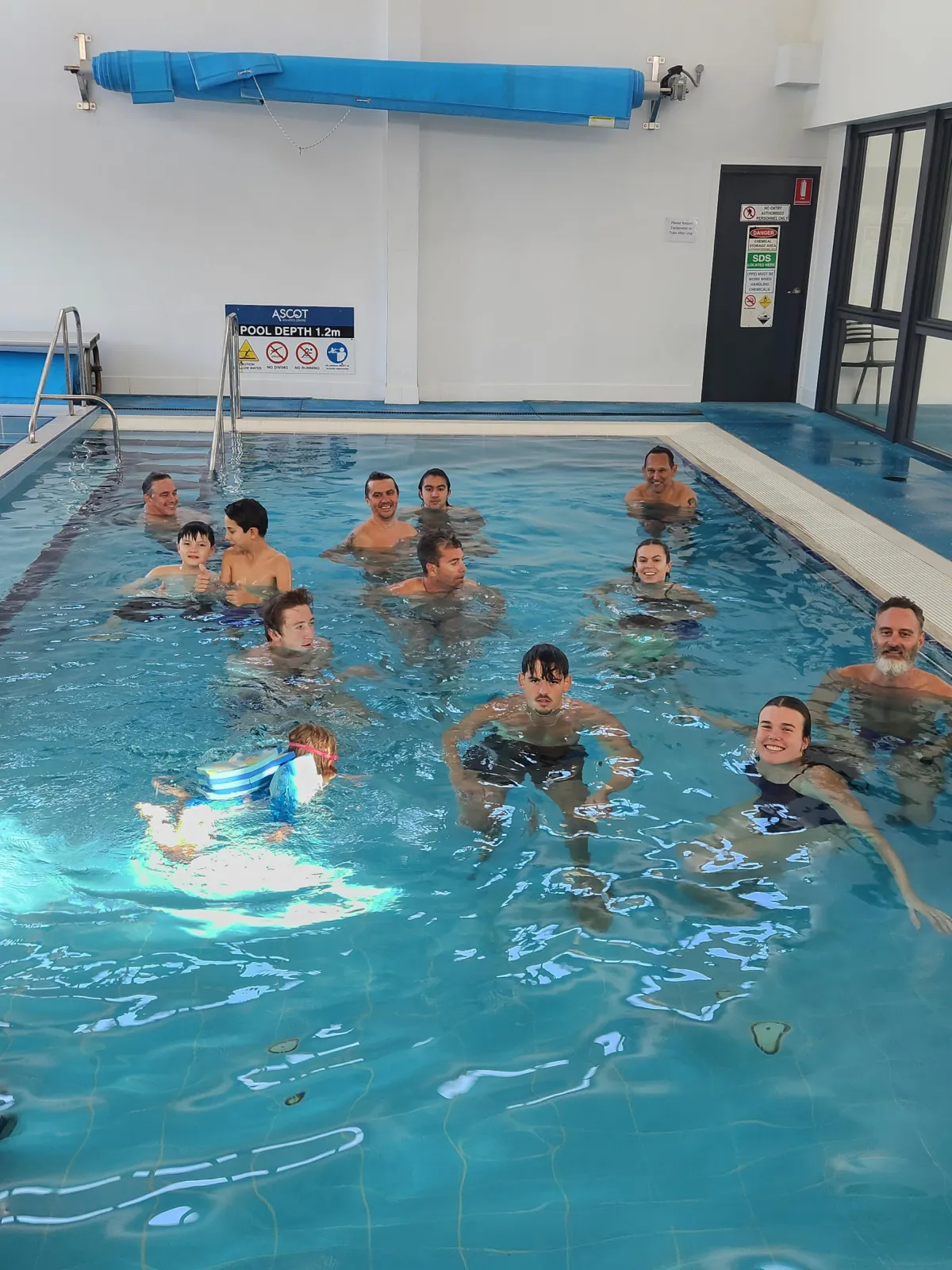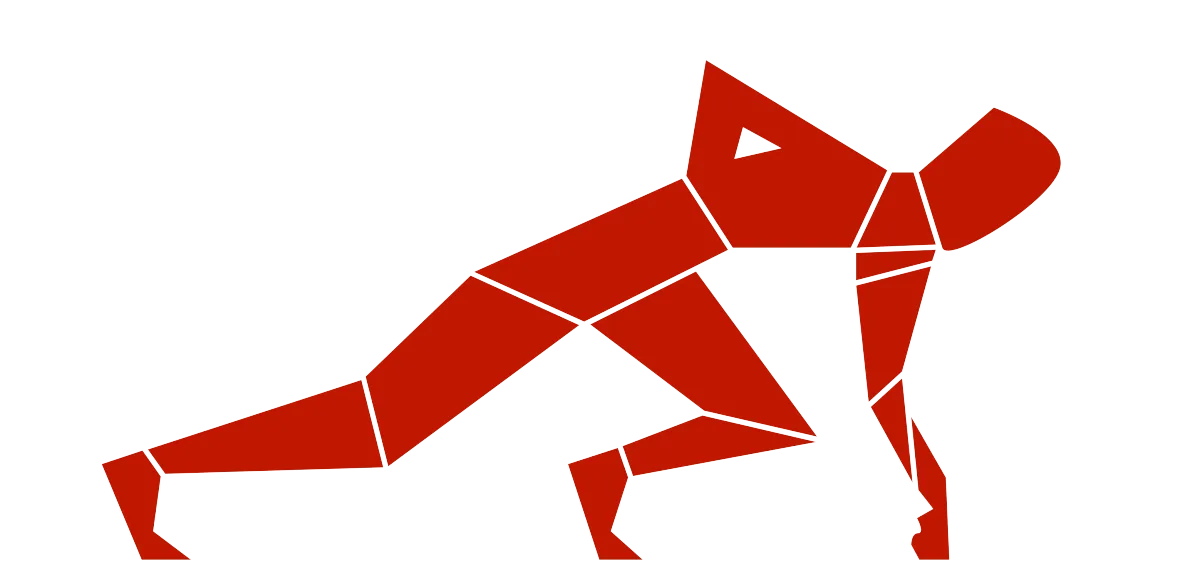Latest News
Begin Your Journey
You have sacrificed your health and physique to chase your career and start your family. That is okay.
But now, it is time to reclaim your health and Fitness. Get Fit, Get Lean, Get Primal!

The Science and Benefits of Cold Water Exposure- A Deep Dive into Cold Shock Proteins and Optimal Health
The Science and Benefits of Cold Water Exposure: A Deep Dive into Cold Shock Proteins and Optimal Health

Cold water exposure, often seen in practices like cold plunges, ice baths, and winter swimming, is more than just a test of mental toughness—it's a scientifically backed method for enhancing overall health, boosting recovery, and even promoting longevity. The practice has garnered significant attention due to its profound physiological effects, particularly through the activation of cold shock proteins (CSPs). These proteins play a crucial role in cellular protection, repair, and adaptation, making cold exposure a powerful tool in any health and fitness regimen.
The Role of Cold Shock Proteins in the Body
When the body is exposed to cold temperatures, it triggers an adaptive response, one key aspect of which is the production of cold shock proteins. These proteins, such as RNA-binding motif 3 (RBM3) and cold-inducible RNA-binding protein (CIRP), are essential for cellular function, helping to protect and repair cells from the stress of cold exposure.
Cold shock proteins are particularly beneficial for:
1. Neuroprotection: Research shows that RBM3 is involved in neurogenesis, the process of forming new neurons. This protein helps maintain brain plasticity, which is crucial for learning, memory, and overall cognitive function. Studies have suggested that RBM3 may also play a role in protecting against neurodegenerative diseases like Alzheimer's.
2. Cellular Repair and Recovery: CIRP has been shown to enhance the repair of damaged DNA, a critical function for maintaining cellular health and longevity. Cold exposure-induced CSPs also help to stabilize RNA, ensuring that cells can quickly and effectively respond to environmental stresses.
3. Reducing Inflammation: Cold exposure can lower inflammation levels in the body, partly due to the effects of cold shock proteins. Inflammation is a root cause of many chronic diseases, so reducing it can have far-reaching benefits for overall health.
Cold Water Exposure and Its Impact on the Body
Cold water exposure stimulates a variety of physiological responses beyond the production of cold shock proteins. Here's how it works:
1. Improved Circulation: Cold water constricts blood vessels, forcing the body to pump blood more efficiently to vital organs. Upon rewarming, blood vessels expand, resulting in a surge of freshly oxygenated blood throughout the body. This process not only improves circulation but also aids in flushing out metabolic waste from muscle tissues, which is crucial for recovery.
2. Enhanced Immune Function: Regular exposure to cold water has been shown to boost the immune system by increasing the production of white blood cells and natural killer cells, which are essential for fighting off infections. A study published in PLOS ONE highlighted how winter swimmers had a higher count of white blood cells, suggesting a more robust immune response.
3. Metabolic Boost: Cold exposure activates brown adipose tissue (BAT), also known as brown fat, which burns calories to generate heat. This process increases metabolic rate and can aid in weight management. Moreover, the activation of BAT has been linked to improved insulin sensitivity, which is beneficial for metabolic health.
4. Mental Resilience: The shock of cold water triggers a fight-or-flight response, releasing a surge of adrenaline and noradrenaline. Over time, repeated exposure helps to build mental toughness, reducing the stress response to other challenges in daily life. This practice is often cited for its mood-enhancing effects, with participants experiencing a significant reduction in symptoms of anxiety and depression.
Practical Strategies for Cold Water Exposure
To maximize the benefits of cold water exposure, it's important to approach the practice with care and consistency. Here are some strategies tailored to different outcomes:
1. Recovery and Inflammation Reduction:
Ice Baths: Submerge in a tub filled with ice water (around 10-15°C or 50-59°F) for 5-10 minutes. This is particularly effective after intense workouts to reduce muscle soreness and accelerate recovery.
Cold Showers: Start with your usual warm shower and end with 2-3 minutes of cold water. Gradually increase the time spent under cold water as your tolerance builds.
2. Mental Resilience and Stress Reduction:
Cold Plunges: Immerse yourself in cold water (preferably below 15°C or 59°F) for 1-2 minutes daily. Focus on controlling your breathing to calm the initial shock and build resilience.
Cold Water Swimming: For those near natural bodies of water, cold swimming can be both a challenging and invigorating practice. Ensure that you’re well-prepared and that safety measures are in place.
3. Metabolic Boost and Weight Management:
Regular Exposure: Incorporate shorter, frequent cold showers or dips into your daily routine to keep your metabolism active.
Contrast Therapy: Alternate between hot and cold water exposure to stimulate circulation and boost metabolic rate.
Safety Considerations
While cold water exposure offers numerous benefits, it's crucial to approach it with caution. Individuals with cardiovascular issues or other serious health conditions should consult with a healthcare provider before starting cold exposure practices. Additionally, always listen to your body—if you feel dizzy, excessively cold, or uncomfortable, it's important to exit the cold environment immediately and warm up safely.
The PrimalThenics Connection: Integrating Cold Exposure into a Holistic Health Routine
At PrimalThenics, our approach to fitness emphasizes the integration of natural, primal elements that support both physical and mental well-being. While our training system primarily focuses on dynamic movement, balance, and strength exercises, incorporating cold exposure can complement these practices by enhancing recovery, boosting resilience, and supporting overall vitality.
By pairing cold exposure with the PrimalThenics methodology, you can create a comprehensive health routine that not only improves performance but also promotes longevity and mental toughness. Whether through ice baths, cold showers, or natural cold water plunges, adding cold exposure to your regimen is a powerful way to take your health and fitness to the next level.
Cold water exposure, when practiced safely and consistently, offers a host of benefits that go beyond mere physical conditioning. From the activation of cold shock proteins that protect and repair cells to the mental resilience gained through regular practice, cold exposure is a powerful tool for enhancing overall well-being.
Whether you're looking to speed up recovery, improve mental clarity, or boost your metabolism, cold water exposure is a simple yet effective strategy to incorporate into your daily routine. At PrimalThenics, we encourage you to explore this ancient practice and discover how it can complement your existing fitness regimen, helping you to unlock your full potential both physically and mentally.
References:
1. PLOS ONE Study on Immune Function:
Janský, L., Pospíšilová, D., Honzová, S., Uličný, B., Šrámek, P., Zeman, V., & Kamínková, J. (1996). Immune system of cold-exposed and cold-adapted humans. European Journal of Applied Physiology and Occupational Physiology, 72(5-6), 445-450.
Link to study: PLOS ONE Study
2. Cold Shock Proteins and Neuroprotection:
Peretti, D., Bastide, A., Radford, H., Verity, N., Molloy, C., Martin, M. G., Moreno, J. A., Steinert, J. R., Smith, T., Dinsdale, D., Willis, A. E., & Mallucci, G. R. (2015). RBM3 mediates structural plasticity and protective effects of cooling in neurodegeneration. Nature, 518(7538), 236-239.
Link to study: Nature Study on RBM3
3. Cold Shock Proteins and Cellular Repair:
Qiang, X., Yang, W. L., Wu, R., Zhou, M., Jacob, A., Dong, W., & Wang, P. (2013). Cold-inducible RNA-binding protein (CIRP) triggers inflammatory responses in hemorrhagic shock and sepsis. Nature Medicine, 19(11), 1489-1495.
Link to study: Nature Medicine on CIRP
4. Cold Water Exposure and Metabolism:
Cypess, A. M., Lehman, S., Williams, G., Tal, I., Rodman, D., Goldfine, A. B., Kuo, F. C., Palmer, E. L., Tseng, Y. H., Doria, A., Kolodny, G. M., & Kahn, C. R. (2009). Identification and importance of brown adipose tissue in adult humans. New England Journal of Medicine, 360(15), 1509-1517.
Link to study: NEJM Study on Brown Fat
5. Cold Exposure and Mental Health:
Shevchuk, N. A. (2008). Adapted cold shower as a potential treatment for depression. Medical Hypotheses, 70(5), 995-1001.
Get The Primal Physicality Guide
Learn how to get into Primal Physical Shape even if you have neglected your body for years.


For further information email [email protected] or call 0452 478 487

Links
Subscribe to my newsletter
Legal notice
Cookies policy
Privacy Policy
Terms of use
© 2025 PrimalThenics
Serving Newmarket, Wilston, Ashgrove & surrounds